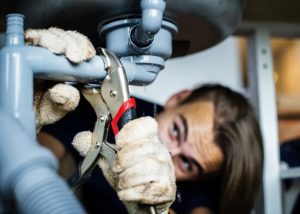How to Locate as well as Repair Work Water Leaks-- A Comprehensive Guide
How to Locate as well as Repair Work Water Leaks-- A Comprehensive Guide
Blog Article
The article in the next paragraphs in relation to Leaking water lines is indeed interesting. Read it for yourself and see what you think about it.

Early discovery of dripping water lines can alleviate a prospective calamity. In addition to conserving you money, it will certainly reduce the worry and irritation. The moment you discover a leak, calling your plumber for repair work is the best remedy. Some tiny water leaks might not be noticeable. If you can not find it with your naked eyes, right here are some hacks that assist.
1. Examine the Water Meter
Every home has a water meter. Examining it is a guaranteed manner in which assists you uncover leaks. For beginners, turn off all the water resources. Ensure nobody will certainly flush, utilize the tap, shower, run the washing maker or dishwasher. From there, go to the meter as well as watch if it will certainly change. Because no person is utilizing it, there should be no motions. That indicates a fast-moving leak if it moves. If you detect no changes, wait an hour or two and check back once more. This means you might have a slow-moving leakage that might even be underground.
2. Inspect Water Consumption
Examine your water expenses and track your water consumption. As the one paying it, you should see if there are any kind of disparities. If you find sudden changes, despite your intake coinciding, it means that you have leaks in your plumbing system. Bear in mind, your water bill need to fall under the same variety monthly. An abrupt spike in your costs shows a fast-moving leak.
A steady increase every month, even with the same practices, shows you have a slow leak that's also slowly escalating. Call a plumber to thoroughly check your residential property, particularly if you feel a warm area on your floor with piping underneath.
3. Do a Food Coloring Test
When it comes to water intake, 30% comes from bathrooms. If the color in some way infiltrates your dish throughout that time without flushing, there's a leakage in between the tank and dish.
4. Asses Outside Lines
Don't fail to remember to check your exterior water lines also. Test spigots by affixing a garden tube. Must water seep out of the link, you have a loose rubber gasket. Change this as well as ensure all links are limited. If you have actually obtained a sprinkler system, it will certainly help get it skillfully analyzed and also maintained annually. One tiny leakage can waste lots of water and also spike your water expense.
5. Check as well as Assess the Scenario
House owners should make it a habit to check under the sink counters and also inside cupboards for any type of bad odor or mold development. These 2 red flags indicate a leakage so timely attention is required. Doing regular assessments, even bi-annually, can conserve you from a major trouble.
If you know your house is already old, maintain a careful eye on your heating units, tubes, pipes and so on. Check for discolorations as well as deteriorating as the majority of devices and also pipelines have a life span. They will certainly additionally normally degrade because of deterioration. If you think dripping water lines in your plumbing system, don't await it to intensify. Call an expert plumber today so you don't end up with an awful mess in your home.
Early detection of leaking water lines can reduce a prospective calamity. Some little water leaks may not be visible. Checking it is a surefire method that assists you uncover leaks. One tiny leakage can waste heaps of water and also surge your water bill.
If you presume dripping water lines in your plumbing system, don't wait for it to rise.
WARNING SIGNS OF WATER LEAKAGE BEHIND THE WALL
PERSISTENT MUSTY ODORS
As water slowly drips from a leaky pipe inside the wall, flooring and sheetrock stay damp and develop an odor similar to wet cardboard. It generates a musty smell that can help you find hidden leaks.
MOLD IN UNUSUAL AREAS
Mold usually grows in wet areas like kitchens, baths and laundry rooms. If you spot the stuff on walls or baseboards in other rooms of the house, it’s a good indicator of undetected water leaks.
STAINS THAT GROW
When mold thrives around a leaky pipe, it sometimes takes hold on the inside surface of the affected wall. A growing stain on otherwise clean sheetrock is often your sign of a hidden plumbing problem.
PEELING OR BUBBLING WALLPAPER / PAINT
This clue is easy to miss in rooms that don’t get much use. When you see wallpaper separating along seams or paint bubbling or flaking off the wall, blame sheetrock that stays wet because of an undetected leak.
BUCKLED CEILINGS AND STAINED FLOORS
If ceilings or floors in bathrooms, kitchens or laundry areas develop structural problems, don’t rule out constant damp inside the walls. Wet sheetrock can affect adjacent framing, flooring and ceilings.
https://www.servicemasterbyzaba.com/blog/how-to-detect-water-leakage-in-walls/

We had been brought to that report about Hacks to detect leaks from a friend on a different web address. Feel free to take a moment to promote this entry if you enjoyed it. We enjoy reading our article about Locating water leaks.
Report this page